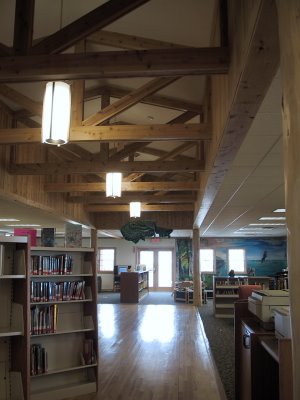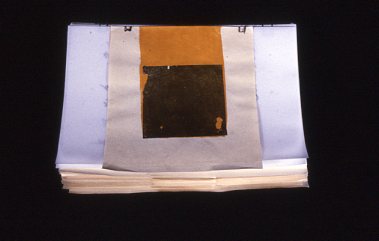
When I am up north, most days I can be found at the library in the early afternoon. It is a great place for me to hook up (they have WIFI) and spend two or three hours doing the part of my work that needs to be done online. Working this way helps me to organize the things I don't do online.... I always make a list before I leave the house - because you don't just "run to the store" up here. So my daily sojourn may also include the grocery store, post office, hardware or pharmacy. I know at least once a week I will probably have to drive to the Soo or to St. Ignace - which is a longer trip. If I need something exotic, like, say - looseleaf binder dividers - or page protectors.....
The plumber told me that the early spring has been dry - but they have made up for it since I arrived. Solid days of rain, lots of wind. The barn next door has partially blown over. The road is flooded going towards Hessel - and lots of trees down. Walking through the wind is exhilarating. I am so grateful to my family that they give me this time up here - it is a real gift.
Last night I finished Joan Didion's book, The Year of Magical Thinking. She wrote it the year after her husband of forty years had passed. I had heard about this book through a family member after John's dad died. Someone had sent her a quote from the book that she then passed on to all of us about mourning, "...the death of a parent [..] despite our preparation, indeed, despite our age, dislodges things deep in us, sets off reactions that surprise us and that may cut free our memories and feelings that we had thought gone to ground long ago. We might, in that indeterminate period they call mourning, be in a submarine, silent on the ocean's bed, aware of the depth charges, now near and now far, buffeting us with recollections."
She then differentiates between this and grief - which she defines as having no distance - and having the obility to obliterate the dailiness of life. The book is a powerful read.












